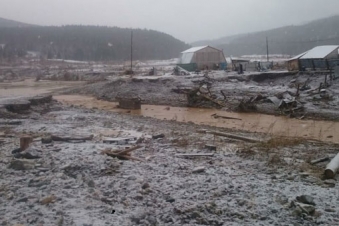Massive explosions destroyed the Nova Kakhovka dam in southern Ukraine on Tuesday, draining one of Europe’s largest artificial reservoirs and unleashing a humanitarian and ecological catastrophe that forced thousands to evacuate in the face of surging floodwaters.
Summary
Massive explosions destroyed the Nova Kakhovka dam in southern Ukraine on Tuesday, draining one of Europe’s largest artificial reservoirs and unleashing a humanitarian and ecological catastrophe that forced thousands to evacuate in the face of surging floodwaters.
- Ukrainian authorities said the dam’s destruction would leave hundreds of thousands without access to clean drinking water and forced the evacuations of tens of thousands along the Dnipro River’s floodplain.
- The Dnipro is a major river bisecting Ukraine from north to south, and the gargantuan hydroelectric dam irrigated large swaths of Ukraine’s agricultural heartland.
- At least 29 communities along the Dnipro River have been flooded, with 10 along the Ukrainian side of the river and 19 on the Russian-occupied side.
- At least 16,000 people have already lost their homes, although neither side has reported any civilian casualties yet. It may take days or weeks to fully account for the devastation caused by the dam’s deliberate destruction.
- The most likely cause of the dam’s collapse was a deliberate internal explosion, according to engineering and munitions experts who spoke to the New York Times. Russian forces have controlled the dam since early last year, bolstering Ukraine’s argument that they were best placed to destroy the dam.
![]()
- The Guardian published before and after satellite images of the flooding to illustrate the scale of the devastation. The pictures “show the devastating results of flooding in towns and villages along the Dnipro River. Some 17,000 people have been evacuated from settlements that lay in the path of the flooding. The images show houses and buildings submerged in water, with many having only their roofs showing, and water taking over parks, land and infrastructure.”
- The New York Times reported floodwaters were expected to peak on Wednesday morning as hundreds of thousands of civilians remain “without normal access to drinking water.” Additionally, an oil slick of “at least 150 tons” could be washed into the Black Sea, leaving an ecological disaster in its wake.
- CNN exclusively reported that Ukrainian troops witnessed Russian personnel being swept away by the floodwaters, leading to many Russian troops being killed or injured. Capt. Andrei Pidlisnyi told CNN, “No one on the Russian side was able to get away. All the regiments the Russians had on that side were flooded.”
![]()
- The Wall Street Journal assessed the economic impact of the dam collapse. The dam’s destruction has pushed global grain and produce prices higher and could threaten Ukraine’s agriculture sector, a major revenue-raiser for the government and a critical piece of the global food market.
- Fox News estimated that “nearly 100 villages and towns would be flooded,” and it could take as much as a week for the torrents of water to subside. Ukrainian officials had previously estimated that the dam’s collapse could unleash 4.8 billion gallons of water upon populated areas.
- National Review’s Noah Rothman clarified that the attack on the dam wasn’t a “disaster,” although many have referred to it as such. Rothman writes, “That’s a forgivably common way to describe devastation of this magnitude, but it’s also a description that would apply to ravages of an earthquake or a structure fire. The implosion of the edifice holding back the full force of the Dnipro River was no accident nor an act of God. It was most likely a deliberate, indiscriminate attack on Ukrainian civilians and on global ecology.”
Author’s Take
Author’s take
© Dominic Moore, 2023






